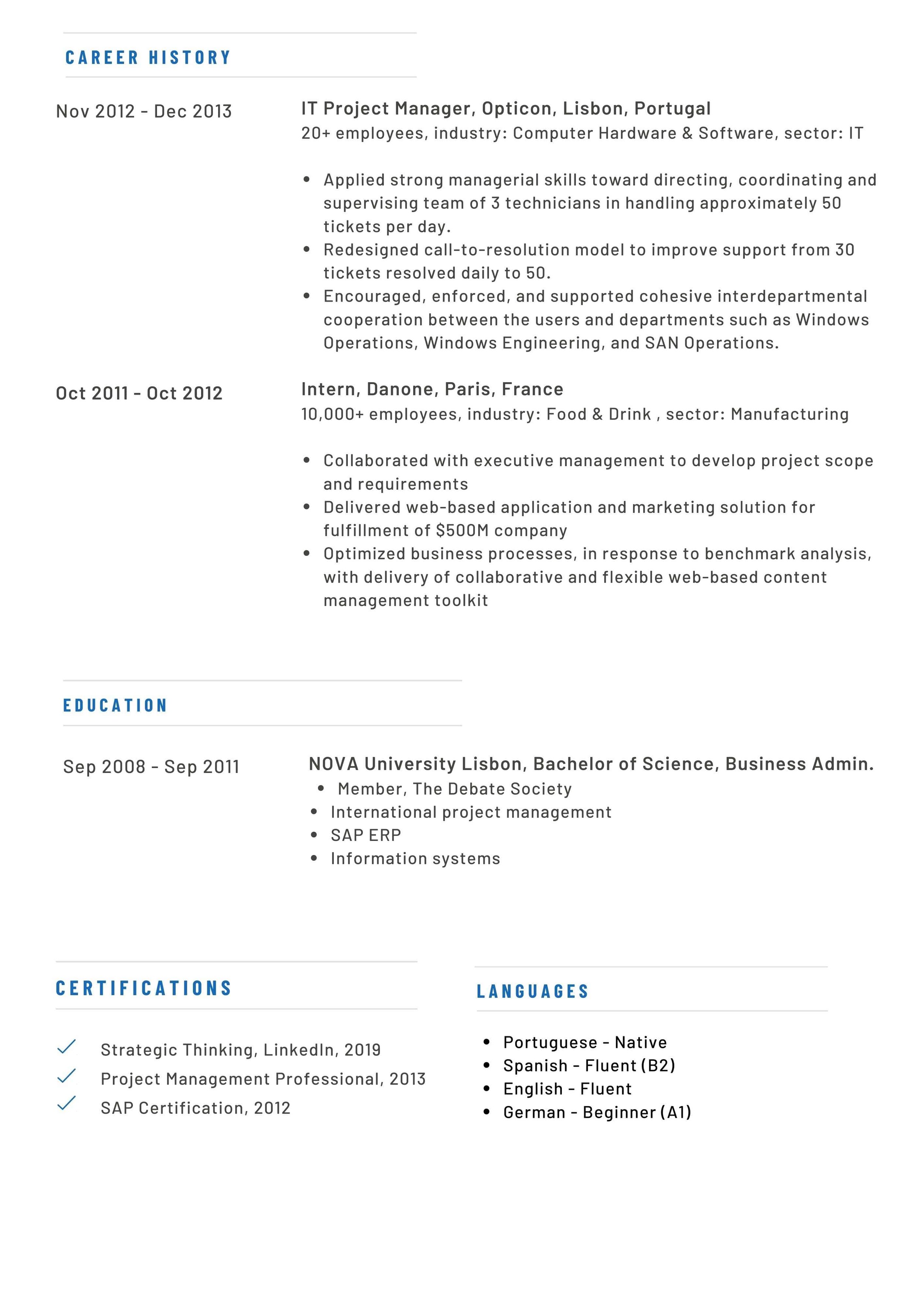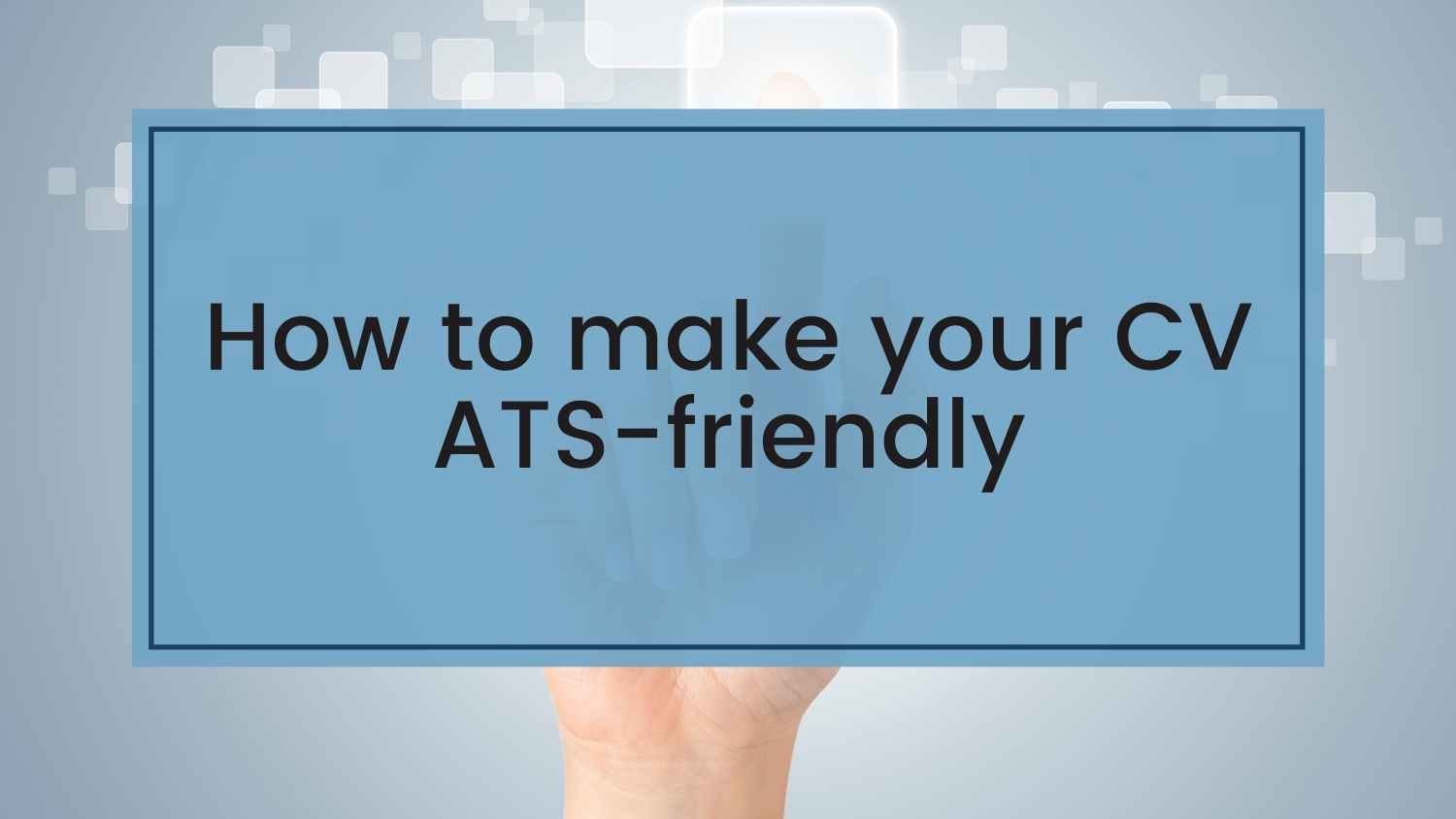Create a CV that will convince recruiters in Germany
General facts
Maximum length of your CV: 2 pages
Professional summaries with a short self introduction are not common on CVs in Germany. CVs usually consist of bullet points and should not include any fully written paragraphs (the cover letter in contrast should only include fully written paragraphs)
In case the job ad specifies that you need to include your salary expectations you can include them in your cover letter
Keep it updated to have it ready when needed
Are you applying for jobs in Germany and don't know what your CV - the so-called “Lebenslauf” in German - should look like? For many HR professionals, the CV is the most important part of an application. Along with the cover letter, it determines whether you will be invited for an interview. It is worthwhile to familiarize yourself with the standards in Germany and to prepare your CV as well as possible.
Here is an example of a CV design:
Formatting and wording of your CV
Use the same layout for your Cover letter and CV
Come up with a nice and clearly arranged design: Stick to one font type, 2 font sizes and 1-2 selected colors. We usually recommend to try and create your own design instead of simply using the Europass template for instance. You will find many good design suggestions if you do a quick Google search.
Avoid the use of abbreviations
Try to make your qualifications (e.g. former employers, university degrees, …) understandable for someone who does not have any background or knowledge about your home country by including additional information (e.g. company size, location, sector, recognition status of your degree)
If possible, write it in German and get it proofread by a native speaker
How to structure the contents of your CV
Personal data: Name, address, age or date of birth, photo (not mandatory)
Professional experience
In chronological order mentioning the most recent position first
Include the duration of employment, job title, company name and location for every position mentioned
Max. 3-5 bullet points with details on every position
Do you have gaps on your CV? Here is a video where we explain how you can handle them.
Education
In chronological order mentioning the most recent qualification first
Include your academic degrees, university name and location and the duration of your studies. If you have information about the recognition of your degree you can also list this here
Tip for students or graduates: List selected courses that you have attended at university and that prove your qualification for the position. This is a good way to make up for some of the lack of work experience on your CV
Additional qualifications
Awards, scholarships, networks and associations, voluntary activities
Trainings, programming skills
Language skills and certificates
For researchers: List of publications (in this case it is okay to add an additional page to your CV)
Make sure that your CV is ATS-friendly
Have you finished your CV and your Cover letter? There is one last step you should take before submitting your application: Make sure your application documents are ATS-friendly to make it through the first round of screening without being filtered out by automated screening tools. Find out how by reading this article.
Videos on CV writing
Check out our full collection of videos on YouTube.













